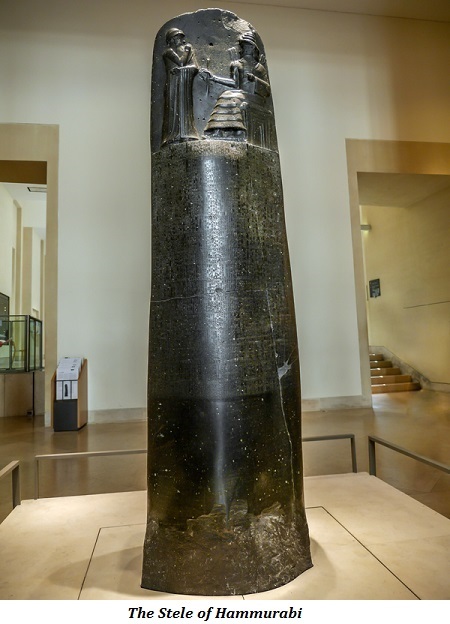

The art of ancient Mesopotamia is renowned for its rich and varied forms, depicting not only the gods and goddesses of the time but also the people and animals that populated the land. The art of the ancient Near East, specifically Mesopotamia, often depicted humans and animals in various forms and styles. These depictions can provide insight into the beliefs, values, and daily lives of the people who created them.

Fivelegged Assyrian mesopotamian centauroid
Ancient Mesopotamia was a civilization located in the eastern Mediterranean and was home to some of the world's earliest known cities.
Mesopotamia was home to several prominent ancient cultures including Sumer, Akkad, Assyria, and Babylonia.
The art of ancient Mesopotamia was highly advanced and diverse, including sculptures, reliefs, and cylinder seals.
Sculptures were created in various materials such as stone, metal, and clay, depicting various gods, goddesses, and other figures.
Reliefs were carvings in stone or other materials, often depicting scenes of everyday life, religious rituals, and battles.
Cylinder seals were small, cylindrical objects with intricate designs and were used as signatures, or to mark ownership of property.
The art of ancient Mesopotamia also included intricate mosaics, metalwork, and jewellery, all of which reflect the skill and creativity of the ancient Mesopotamian artisans.
The art of ancient Mesopotamia was not only used for decorative purposes; it also had a religious, political, and social significance.

Humans and animals were often depicted together in Mesopotamian art, such as in scenes of hunting, farming, and everyday life, reflecting the close relationship between humans and animals in ancient Mesopotamian society.
Animals such as lions, bulls, and other wild beasts were frequently depicted in their natural environments, highlighting the importance of hunting and the role of wild animals in ancient Mesopotamian culture.
Many Mesopotamian gods and goddesses were also depicted with animal attributes, such as the god Pazuzu with the head of a lion and wings of an eagle, showcasing the belief that gods and goddesses possessed both human and animal characteristics.
The representation of animals in art also had a religious significance, depicting them as powerful and sacred creatures, with some animals being associated with specific gods and goddesses.
The depiction of animals in art also reflects the importance of the animal in the daily life of the Mesopotamian people, such as the bull being a symbol of strength and power, and the lion being associated with royalty and divinity.
The art of ancient Mesopotamia also depicted humans and animals in a variety of styles and techniques, from detailed and realistic to stylized and abstract, showcasing the skill and creativity of the ancient Mesopotamian artists.
Anthropomorphism in ancient Mesopotamian art is the attribution of human characteristics and emotions to non-human entities, such as animals and gods.
This concept is often seen in the depiction of gods and goddesses in human form with animal features, such as the god Pazuzu with the head of a lion and wings of an eagle. This is used to convey the idea that gods and goddesses possess both human and animal characteristics, making them more relatable and understandable for the viewer.
Anthropomorphic animals and monsters were also common in Mesopotamian art, such as the lamassu, a winged bull with a human head, which were used to convey the power and strength of the gods and other supernatural beings.
The use of anthropomorphism in art also reflects the belief in the continuity between humans and animals, gods and nature.
The anthropomorphic figures were also used to convey a message, such as a warning or a protection.
In conclusion, the art of ancient Mesopotamia provides a fascinating glimpse into the beliefs, values, and daily lives of the people who created it. The representation of humans and animals in the art, as well as the use of anthropomorphism, give us a unique understanding of the culture and society of the time.
The depiction of gods and goddesses in human form with animal features and the use of anthropomorphic animals and monsters, highlight the belief in the power and strength of the supernatural beings. The art of ancient Mesopotamia serves as a reminder of the rich cultural heritage of the ancient Near East and the enduring legacy of its people. It is a testament to the enduring power of art to convey the beliefs and values of a culture, even across the centuries.
Q1. What is the significance of cylinder seals in ancient Mesopotamian art?
Ans. Cylinder seals were small, cylindrical objects with intricate designs that were used as signatures or to mark ownership of property. They were used by the elite and officials to mark ownership of property and to serve as a form of identification.
Q2. What are some common forms of anthropomorphism in Mesopotamian art?
Ans. Common forms of anthropomorphism in Mesopotamian art include the depiction of gods and goddesses in human form with animal features, such as the god Pazuzu with the head of a lion and the wings of an eagle. Additionally, anthropomorphic animals and monsters, such as the lamassu, which is a winged bull with a human head, were also common in Mesopotamian art. These forms of anthropomorphism were used to convey the power and strength of the gods, goddesses, and other supernatural beings.
Q3. What other forms of art were common in ancient Mesopotamia?
Ans. Other forms of art that were common in ancient Mesopotamia included sculptures, reliefs, and cylinder seals. Sculptures were created in various materials such as stone, metal, and clay and depicted various gods, goddesses, and other figures. Reliefs were carvings in stone or other materials, often depicting scenes of everyday life, religious rituals, and battles.